Fuji X-M5 – The big surprise
Fuji X-M5: A tiny little gem
First of all, I got the Fuji X-M5 for 4 weeks lend by Fujifilm. I haven’t (yet?) bought it. That being said, I was already curious about the camera, when it came out. I mainly tested with the 33mm F1.4, which is basically a „nifty fifty“ – that’s not ideal for studio works, but great for everything else, so I went with that combo.
I have always been looking for a small camera with autofocus to carry around every day – but in that case, let’s see if the X-M5 can also do big business…
Focus
I used Eyetracking in the Studio, and it worked awesome. I also made a small test outside with the 56mm 1.2, and it missed only one single shot out of probably 50. That’s a huge benefit against my old Canon 5d4, that works only in AI Servo mode and misses quite a lot – something around 30% depending on how quickly the model moves.
Comparing the focus speed: The X-M5 works fine. As fast as my canon, which is already fast enough for Studioworks. It didn’t give me any disadvantages.
Handling
I am so used to my Canon gear that during shootings my complete focus is on composing images and adjusting light. And the Canon is just there and works – without any distractions. Luckily the Fuji was surprisingly easy to handle.
I really enjoyed the different film simulations on the extra dial. It helped me changing from Black&White to color within a second – which is awesome.
Also liked the fact that you can change aperture on the lens very quickly.
The camera was almost too small for my hands (my hands are quite average) but the weight is great. Just great.
The biggest difference was shooting without a viewfinder, as the X-M5 doesn’t have one. On the other side, composing was quite different and I tried different angles that would have been awkward to handle with a viewfinder. So it was a change, but not a bad one, and I could adapt to that.
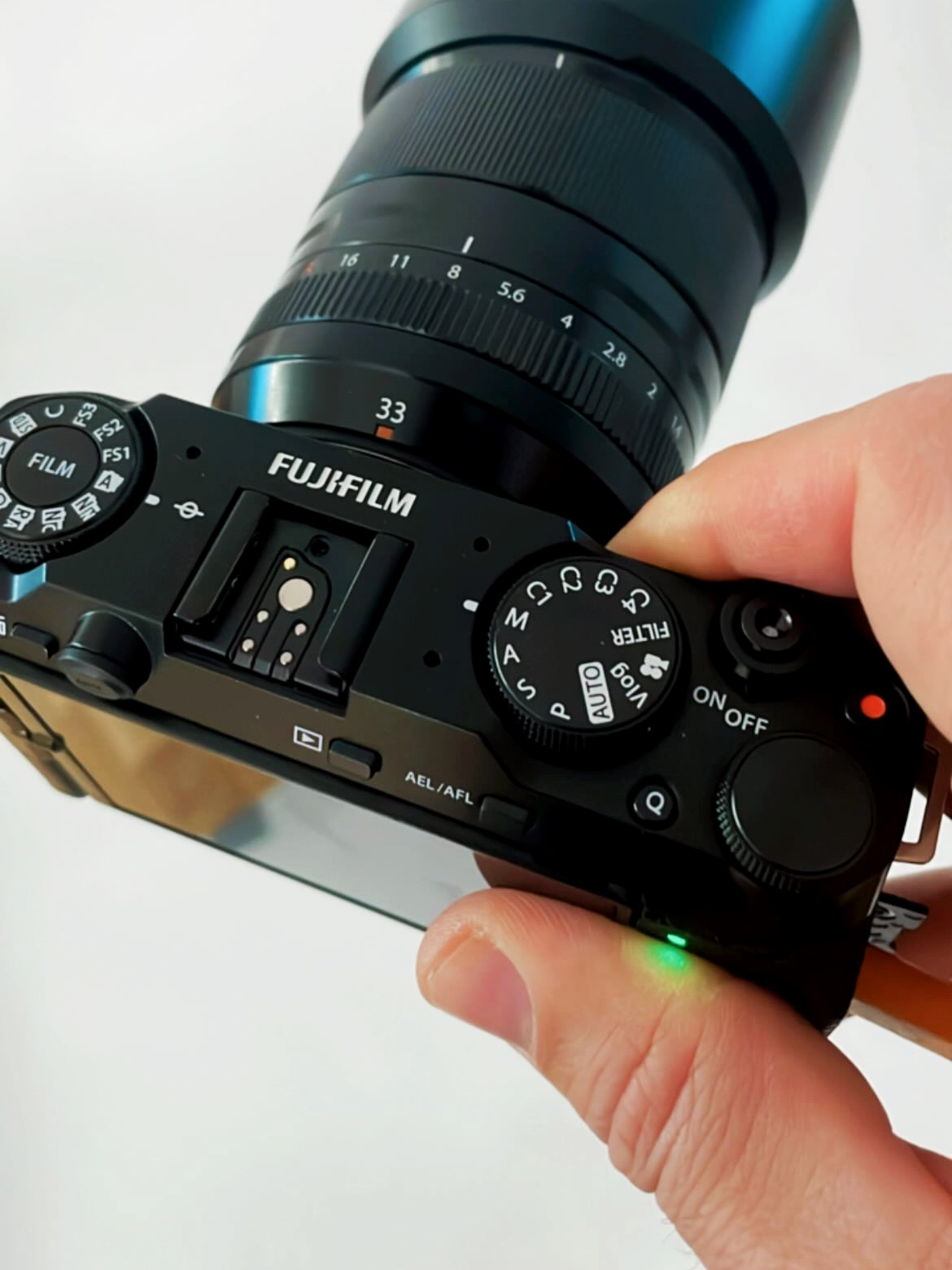
Speed
Speed is fine – as long as you aren’t that kind of photographer who takes 12 shots a second (which is not how I work) you will not have any trouble with the speed.
Also nice to mention: The Fuji can do 4k, 60 Fps. Thats amazing, if you sometimes also shoot video.
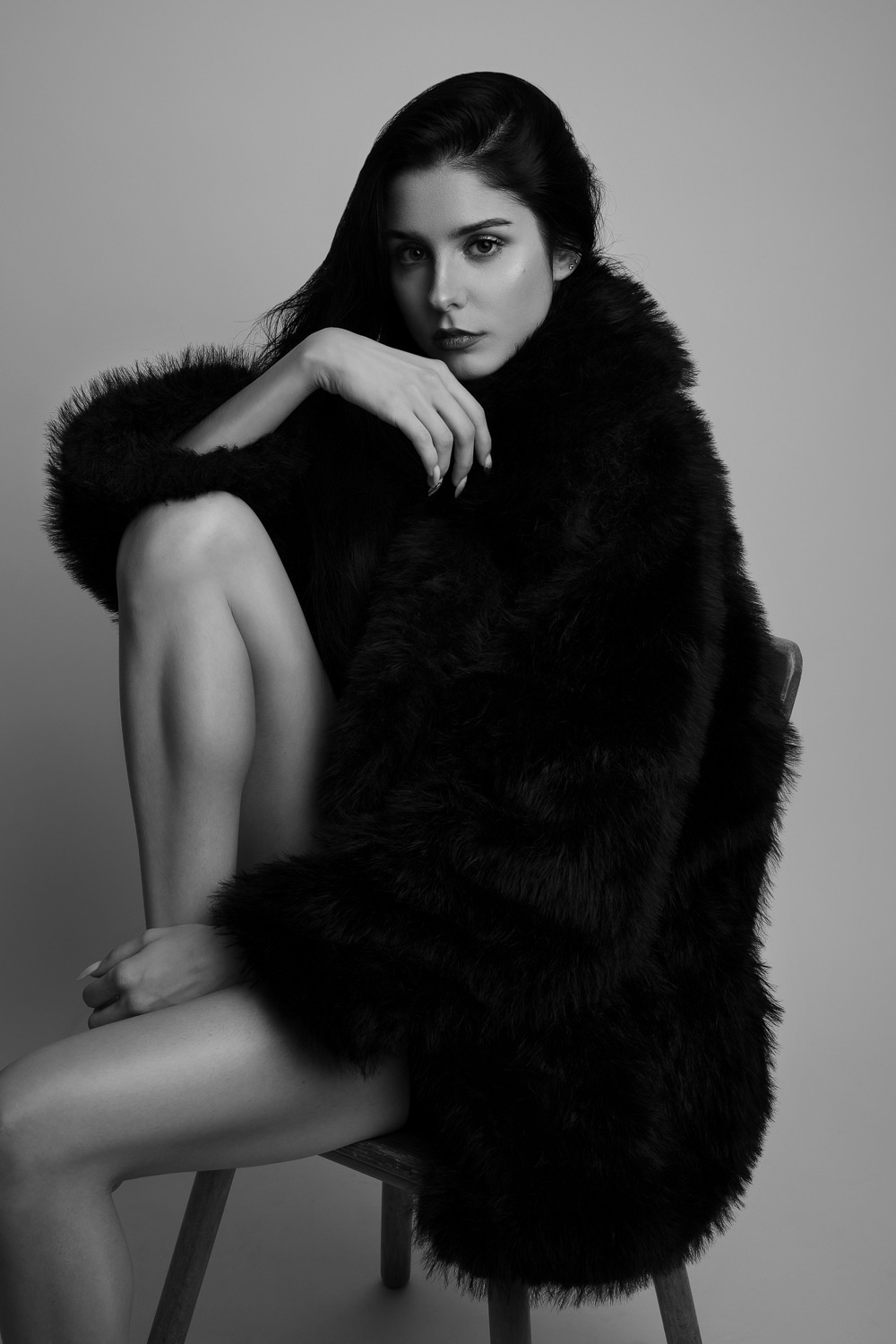
Model Angelina, X-M5, Fujinon 33mm F1.4 / shot at F8, 1/125
Tethering
Next Surprise: The X-M5 tethers very very well. I had a rough start, because the first cable didn’t work properly, then I tried wireless tethering – that sounds basically nice, but works only if you shoot 1-2 images per minute – or shoot jpg only. It just takes waaaay to long to get the raw files on the screen.
Long story short, with the right cable and a software update everything worked great.
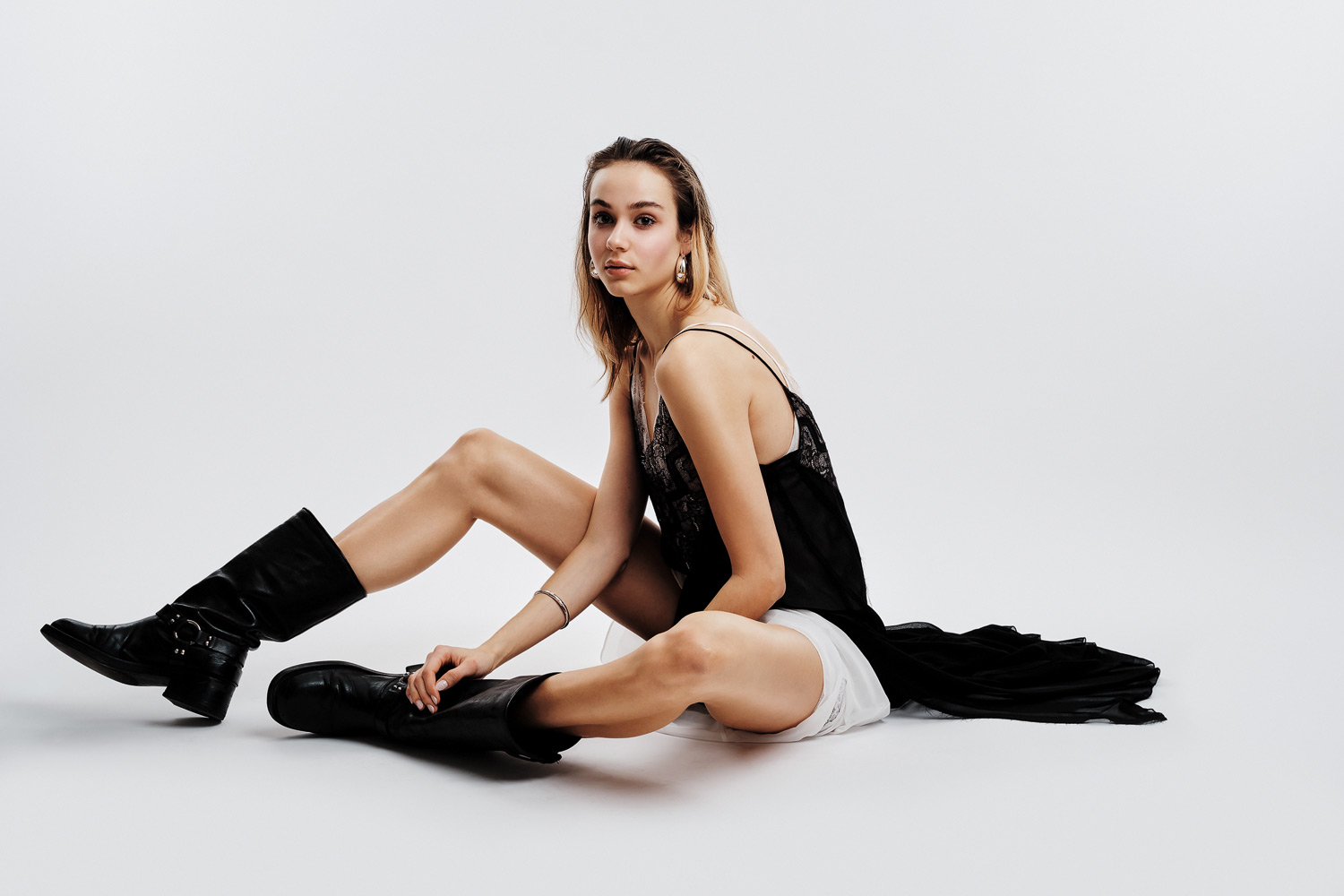
Model: Annika from Nomodels. Fuji X-M5, Fujinon 33mm F1.4 shot at F8 / 1/160
Battery
I shot around 3 hours until the first battery had to be replaced. That’s a lot shorter than canon, but then again, the batteries are small and the display is always on, so that’s not a problem for me.
Image Quality
For me that’s probable the most important thing when using a camera, together with the handling. And it was also a surprise that there is barely a difference between the files of the Fuji X-M5 and my Canon 5d4. Lets get into the details…
26Mpx vs. 30 Mpx
Fuji X-Trans CMOS Sensor vs. Canon Fullframe. I thought it would be a noticable difference. Maybe even a big one. When I started getting serious about photography there was a impressive difference between shooting APS-C and fullframe. All those details, the 3D pop, the bokeh – all that looked massively better on fullframe.
If you want to print big, thats no problem, the 26 Mpx are good for going large.
Comparing the Canon 5d4 files with the Fuji Files, there are some differences between contrast and colour (of course there are cause I used the fuji film simulations) but the details and the transitions looked really nice.
Skintones
I also liked the Acros film simulation, its not as contrasty as my self made preset that I slap on my canon files, but it looks smooth and nice. Also good: The skintones are very close to natural. While Canon is more on the „yellowish“ side, Fuji is more „greenish“ somewhat. But I corrected that within seconds and really liked the result. Also canon is a bit more lively, while Fuji files are a bit modest.
One thing that I would love to test (unfortunately I dont have the time) is how the Fuji compares to a landscape scene. Cause thats where the microcontrast shines.
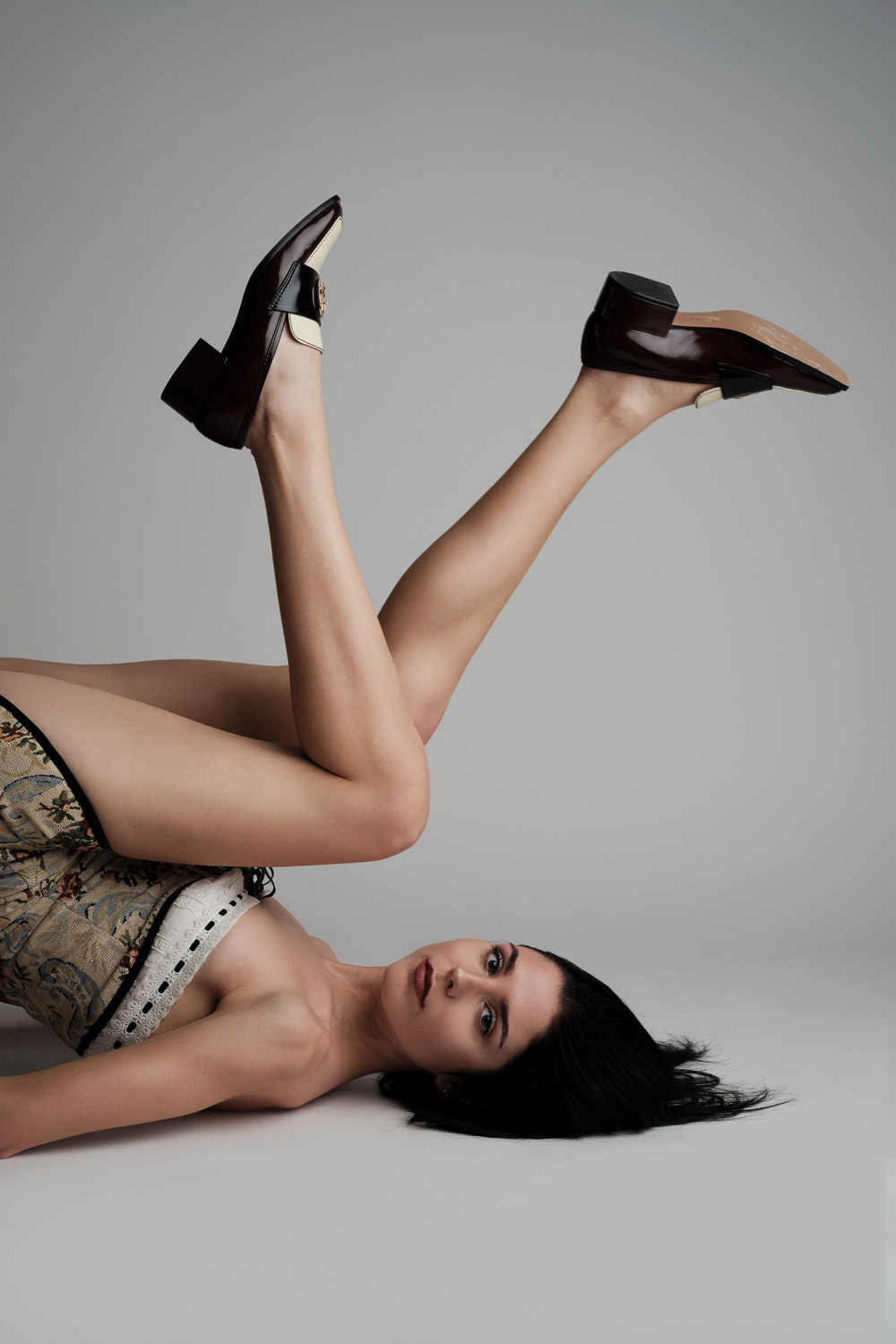
Model: Angelina
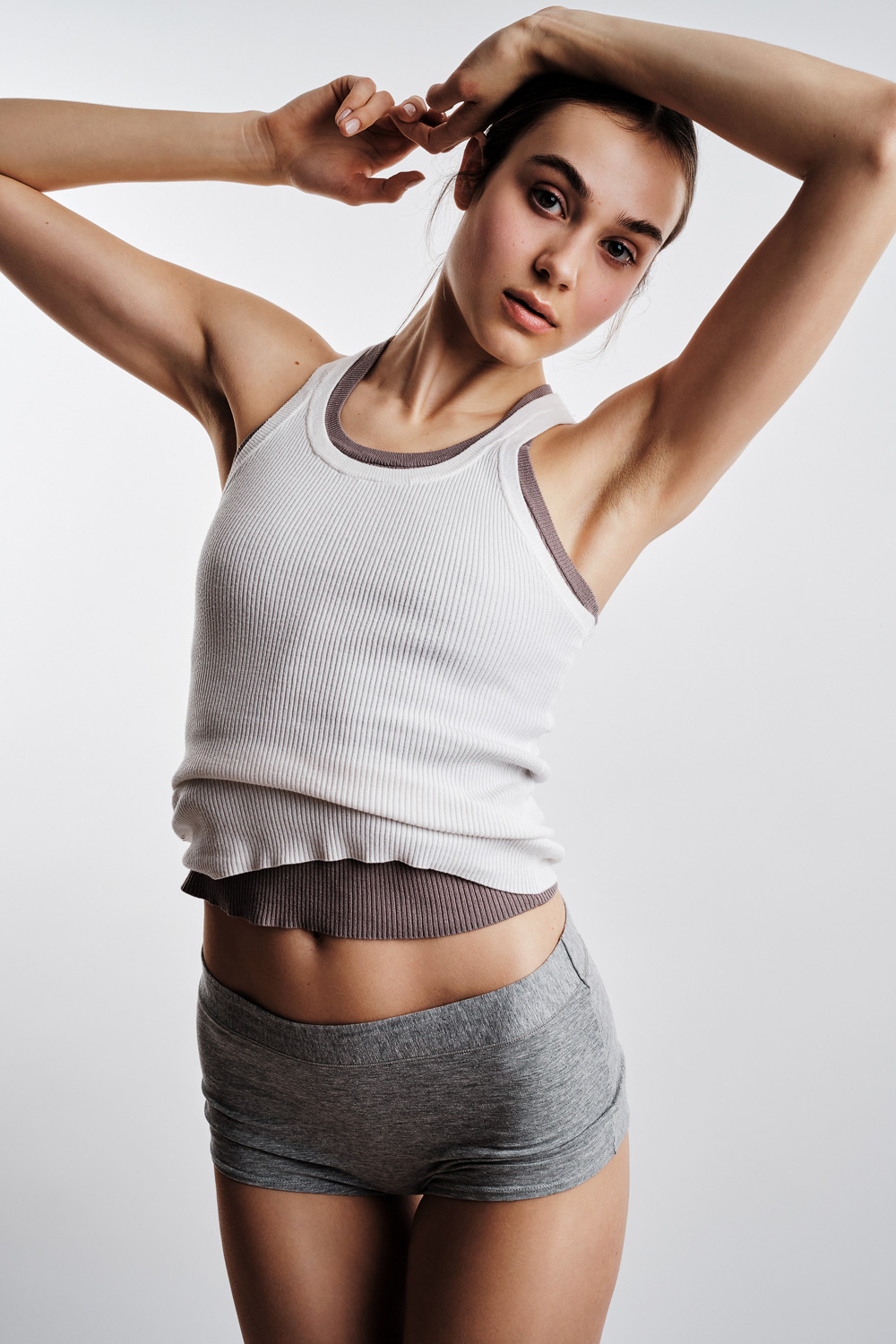
Model: Annika / Nomodels
Downsides
Actually, there aren’t any, if you work in the Studio. I enjoyed it even more, when shooting Outdoor, cause it’s so small to carry around and you don’t draw much attention when using such a small camera.
BUT: I would not attend to a bigger client with that camera, and the reason is pretty simple. Big clients hiring a professional expect big equipment. The bigger the camera, the more they are impressed, and you can ask for higher prices.
I heard from a photographer who always shoots on his 70-200 tele, and uses the biggest body he has – just because of that. He could not get the same money if he just walks in with his pocket camera. Even if the output is the same.
Conclusion
Three years ago, I promised that I will not buy a new camera, as long as my cameras works.
I am currently using a Canon 5D4 – which is my workhorse for almost everything – and an old Leica m240 for travelling and personal stuff, as well as a Fuji GFX50R when I really need lots of resolution.
But there would be a sweet spot for a Fuji X in my camera collection. I could carry this camera all day, snap pictures of my little daughter, get some nice street photography and carry it around when hiking, travelling or document our daily life. And I could use it also for smaller jobs. That makes me thinking hard if I should get this sweet little camera. But I would have to get into a third system.
Can I recommend this camera? Yes – Definitely. It’s very versatile – you can shoot beautiful portraits, the film looks are pretty nice – it connects quickly with your phone (you can connect them easy with cable or Wi-Fi) and you can also use it like a big camera. Tethers well, good autofocus, nice images, high resolution.
It’s a perfect match if you are looking for something minimal, but don’t want to make a lot of compromises concerning image quality. A perfect add-on to your big workhorse.
If you are not a pro photographer, it’s a great all in one solution. Bonus: the jpg-files are beautiful!
I personally decided to keep my promise and don’t buy a new camera – I bought an old one. The X-E2 – just because a local Dealer had a great deal on a used one. To be true: If I hadn’t found that deal, I would have bought the X-M5 for sure!
So far I paired my new old Fuji X-E2 with the awesome Fujinon 16mm F2.8 and the pretty decent TTartisan 35mm F1.8 II.
I will definitely get a pancake lens, most likely the Fujinon 23mm F2.8 and probably switch the 35mm TTartisan to the old 35mm F1.4 Fujinon, just to get that extra F-Stop.
Gear used during this Test:
If you want to check out the rest of my gear, here is a list that I will try to keep updated:
